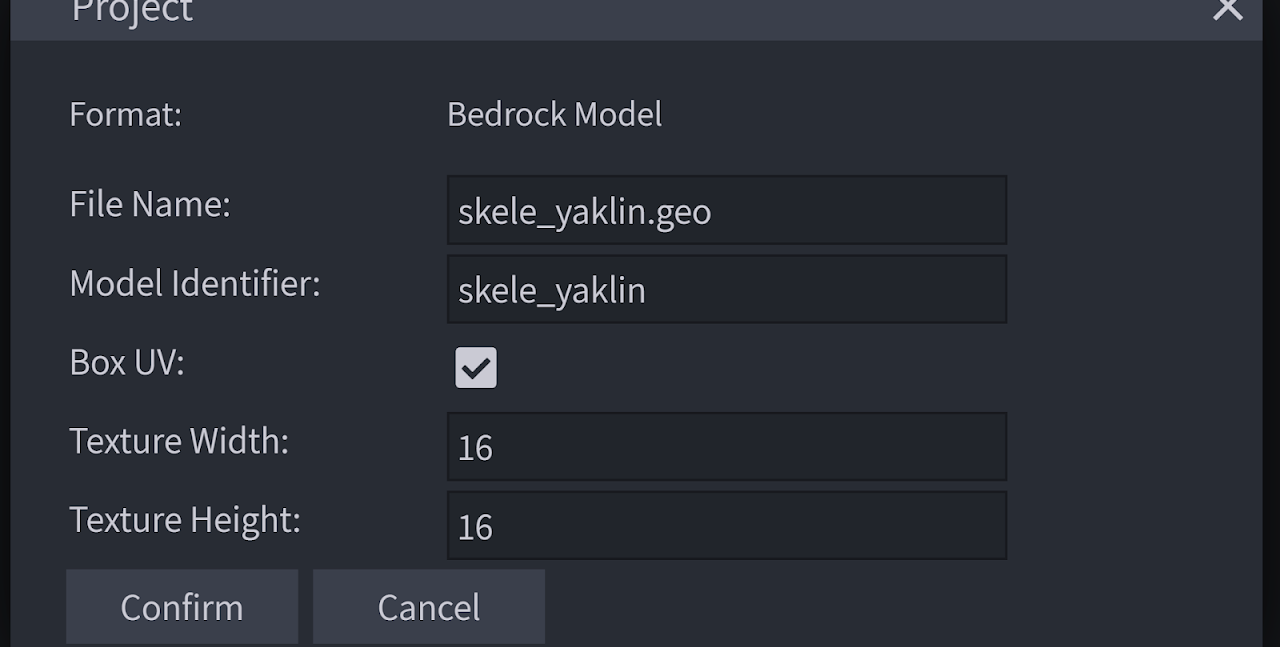

- #Blockbench how to change the rotation point manual#
- #Blockbench how to change the rotation point skin#
- #Blockbench how to change the rotation point download#
#Blockbench how to change the rotation point manual#
The Actions panel provides a completely different set of tools, and the UV Editor displays manual faces as yellow or orange in the UV Editor, whereas automatic faces appear turquoise or blue. You can also select the face(s) you want to set as manual, and click the Convert to Manual button instead. Click the Break Selected Groups button.Īny time you modify edges or vertices in the UV Editor, you enter the Manual UV mode.This procedure removes any group that any of the selected face(s) belongs to. Select any of the faces that belongs to the group.To select all the faces in a Texture Group Note: This does not add the rest of the Texture Group to the selection. Enter the ID number of the desired group in the Texture Group ID text box.Otherwise, the default number (0) appears to indicate it is not assigned to any Texture Group. If this face already belongs to a group, a different number appears in the Texture Group text box. Select the face(s) you want to add to the group.Note the Texture Group ID under the Texture Groups section.If you select the group and the new face and click Group Selected Faces, ProBuilder creates a new group containing the selection. This procedure is the only way to add a face to an existing group without having to break the group and reform it from scratch. In the UV Editor, the UV faces now move as one. Click the Group Selected Faces button.Select the faces you want to group, either from inside the UV Editor or in the Scene view.The faces inside a Texture Group behave as if they are one face for tiling.

When you work in Auto UV mode, you can designate several faces as a Texture Group. Even if you change the geometry, you don't have to adjust or reposition the UVs.

To reset the UVs, select the face(s) you want to fix, navigate to the Auto UV mode Actions panel, and click the Reset UVs button.Īfter you specify these guidelines, ProBuilder keeps the image projections consistent. Tip: If something goes wrong with your UV mapping, and using Undo a few times doesn't fix the problem, you can always reset the UVs on a specific face and start again. There are also a couple of shortcuts to flip the UVs. You can also use the transformation controls to translate, rotate, and scale UV elements, or use precise values with the Offset ( Translate), Rotation, and Tiling ( Scale) values. You can determine how ProBuilder should treat the image: repeat it, enlarge it, or distort it to fill the space. ProBuilder's Auto UV mode provides some basic settings and then uses that information to project the Texture image on the Mesh automatically. Tip: If you hold down the Ctrl/Cmd key while translating in the UV Editor window, the UV element snaps to the grid. For example, you might have a barrel image that contains the sides of the barrel on one half and the lid and bottom on the other half. Scaling changes the size of the projection, so when you scale the UV elements down, a smaller portion of the image appears on the Mesh. For example, if you have an object that is made of wood, you need to line up the grain of the wood in the Texture image with the geometry in a way that makes it look natural.
#Blockbench how to change the rotation point skin#
Rotating turns the image being projected on the skin of the Mesh. For example, if you have a wall with a window, you might need to move the Texture image so that the window image appears at the right height on your wall.

Translating allows you to align the UVs to the geometry. You can translate, rotate, and scale elements to move them into place: In addition, when the UV Editor window is open, you can still manipulate elements in the Scene view: if you turn on the Scope control, you are moving geometry if you turn it off ( ), you are moving UVs. You can manipulate elements with the ProBuilder edit modes in the UV Editor, but you are actually moving UI elements rather than geometry. Manipulating UV elements in the UV Editor This helps simplify the UV unwrapping process, because it simplifies the complexity of the UV elements that appear in the UV Editor. Tip: Before you start to manually edit UVs, delete any hidden faces. The UV Editor window provides several texture mapping tools to help you get the position, orientation, and size just right.
#Blockbench how to change the rotation point download#
You can create it yourself or download one from the Asset Store.Īfter you apply the Texture Material, open the UV Editor to fine-tune the look of the Texture on your Mesh and adjust its appearance. To give your walls, doors, floors, or other objects a realistic look, use a Texture Material, which is just a special Material with a 2-dimensional image defined on it.


 0 kommentar(er)
0 kommentar(er)
